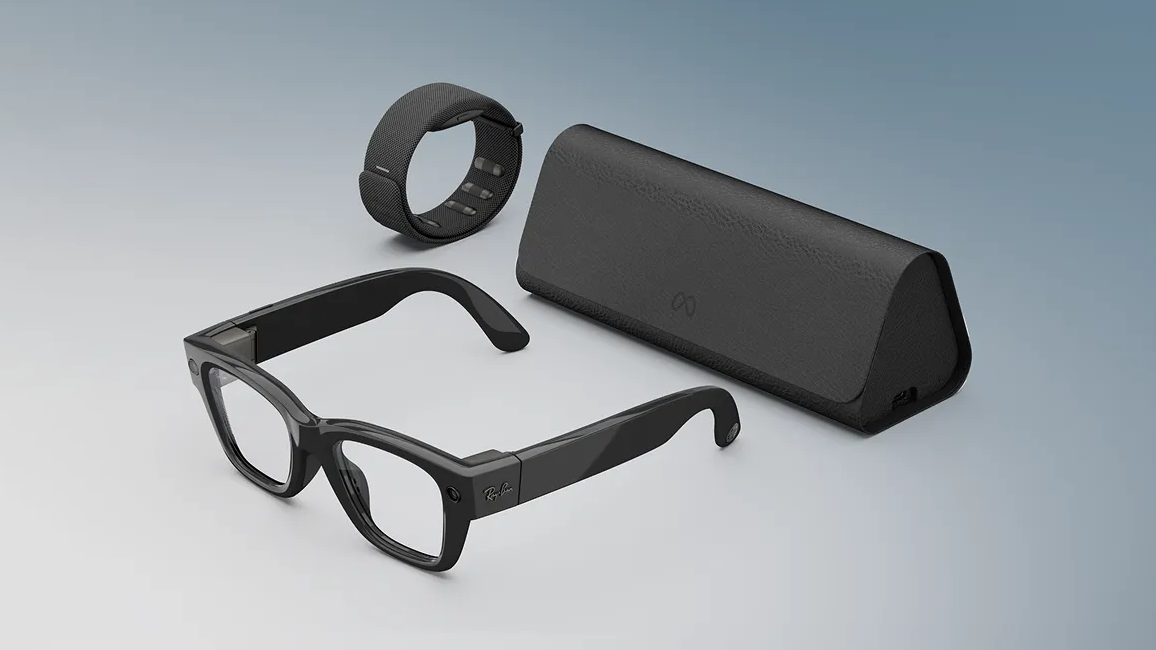Looking to use Meta Ray-Ban Display as your everyday prescription glasses? Here’s a rundown of what prescriptions it supports, and how that works.
For the regular Ray-Ban Meta glasses without a display, you can get prescription lenses officially from Ray-Ban, or unofficially from a wide range of third-party providers. You simply pop out the regular lenses and attach the prescription ones, in a process that costs anywhere from $25 to $100 depending on your prescription and takes a few seconds.
Meanwhile, Meta’s Quest headsets officially support prescription inserts, similarly priced. You just snap them onto the existing VR lenses and you’re good to go.
For the new Meta Ray-Ban Display glasses, the process is a lot more costly, and needs to be handled at the time of purchase, with no aftermarket support.
What Is Meta Ray-Ban Display?
Meta Ray-Ban Display does everything the regular Ray-Ban Meta glasses do, except it also has a small fixed HUD (heads-up display) in the right lens, with an interface that you interact with using finger gestures detected by the included Meta Neural Band.
Meta Neural Band works by sensing the activation of the muscles in your wrist which drive your finger movements, a technique called surface electromyography (sEMG). The wristband includes haptic feedback, has an IPX7 water resistance rating, and Meta claims it should get around 18 hours of battery life.
Meta Ray-Ban Display’s monocular HUD has a field of view of around 20 degrees diagonal, brightness of up to 5000 nits, and resolution of 600×600, providing 42 pixels per degree, which is higher than Apple Vision Pro. The display has just 2% light leakage, meaning other people nearby essentially won’t be able to see it.
Here’s what you can use the display for:
- Meta AI with Visuals, including step-by-step directions.
- Messaging & Video Calling via WhatsApp, Messenger, Instagram, as well as notifications for phone messages.
- Preview & Zoom for capturing photos and videos with the built-in camera.
- Pedestrian Navigation via a minimap in 28 cities.
- Live Captions & Translation for the person you’re looking at.
- Music Playback, including the ability to seek and skip tracks.
Meta Ray-Ban Display glasses weigh 69 grams, compared to 50 grams for the regular Ray-Ban Meta glasses, and 45 grams for their non-smart equivalents. They’re also noticeably bulkier, with thicker frames and temples. But this is the tradeoff of adding a display.
The company claims that the glasses should get around six hours of battery life in normal use, but we’ll need to get our hands on them for a review to verify that in the real world.
In a software update set for December, Meta says Meta Neural Band will even let you enter text by swiping the letters with your index finger on a physical surface.
Because the right lens contains an intricate and expensive waveguide, which delivers the heads-up display (HUD) to your right eye, you can’t simply replace the lens. Instead, Meta Ray-Ban Display’s prescription support is implemented in manufacturing, bonded to the lens.
The bonded prescription lenses are single-vision, polycarbonate lenses with “premium anti-reflective coating”, and like the non-prescription option, they’re clear to gray Transitions.
Meta says it supports near-sightedness (myopia), far-sightedness (hyperopia), and astigmatism, up to a total power of -4 to +4D and up to 4D of CYL.
The company charges $200 for bonding a prescription, meaning the glasses and wristband will cost $1000 in total with prescription support.
Meta Ray-Ban Display Sells Out As Early Adopters Struggle To Buy
Meta Ray-Ban Display is now sold out in almost every store it was available in. Restocks are “coming”, Meta says, and the company is doubling the number of stores offering the glasses.

To buy Meta Ray-Ban Display (with or without prescription lenses) you currently need to make an appointment for a demo at a physical retailer. During this demo, if you bring your prescription information the attendant will add inserts so that you can at least see the text on the HUD.
These inserts aren’t sold, though, they’re just for demos. Meta doesn’t say exactly why, but it’s likely that they have optical tradeoffs, introducing visual artifacts to the HUD, and may add extra bulk.
After your demo, if you go ahead with purchasing Meta says it will take 5 to 8 weeks to deliver, because the prescription lenses are custom bonded to the lenses to match your prescription.
You can schedule a Meta Ray-Ban Display demo on Meta.com.










